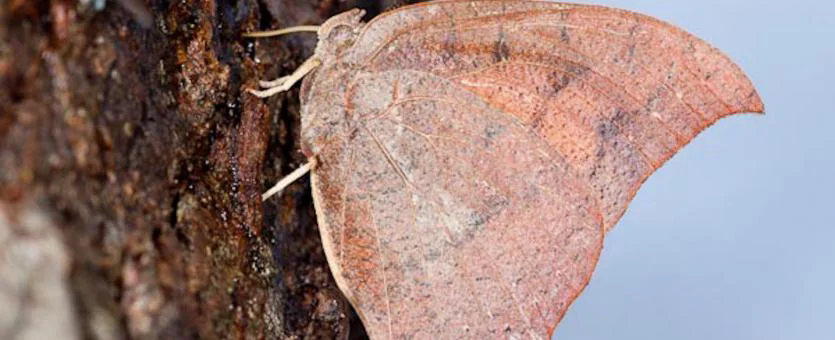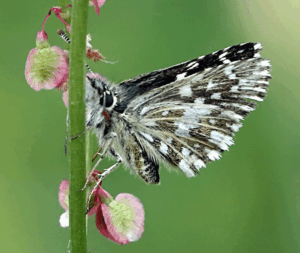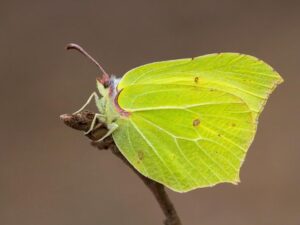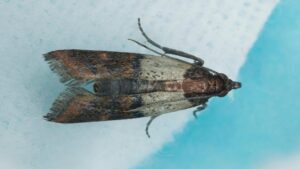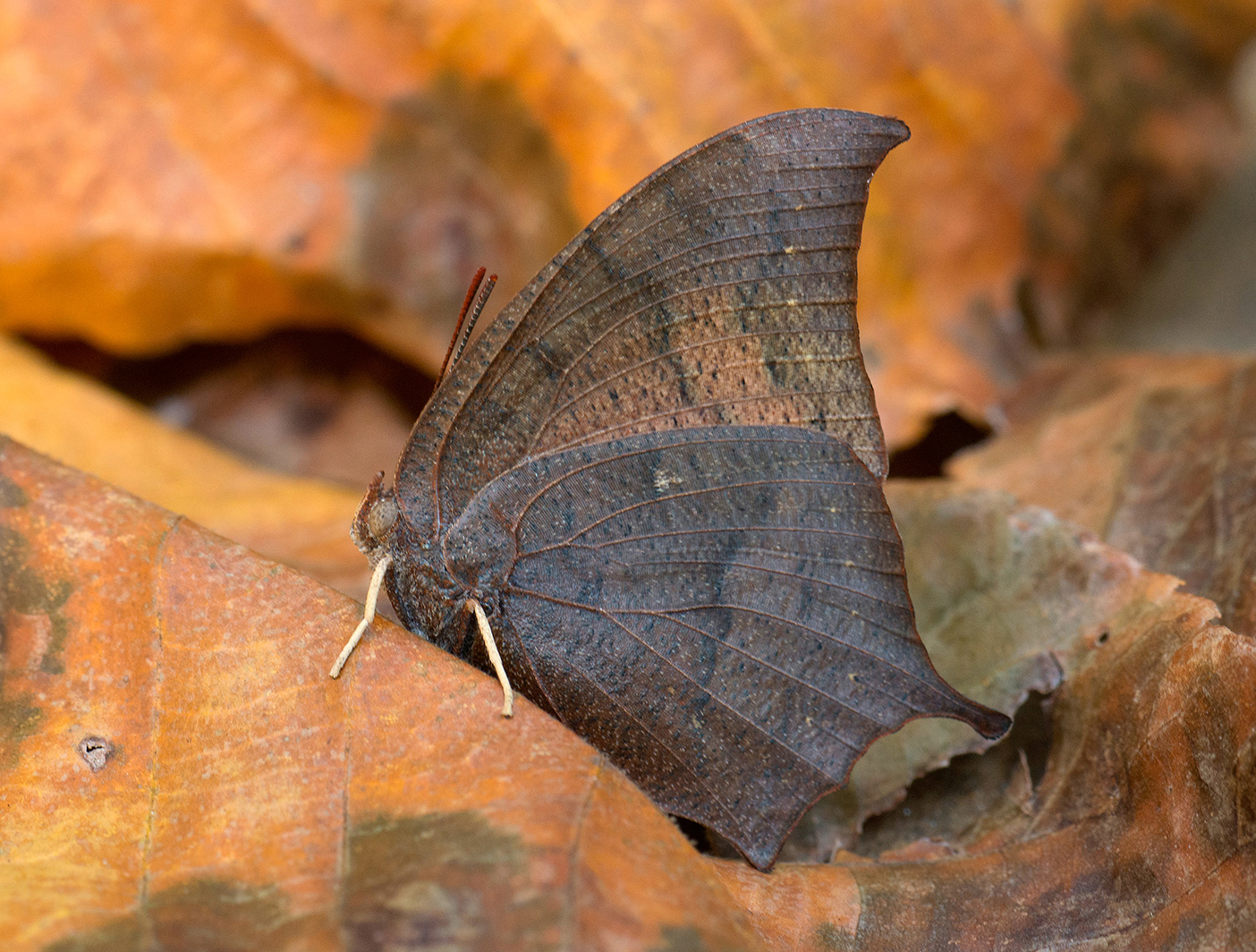
Taxonomy:Animalia, Arthropoda, Hexapoda, Insecta, Lepidoptera, Nymphalidae, Charaxinae
SAVING THE FLORIDA LEAFWING BUTTERFLY
Its flashy red or orange wings make the Florida leafwing butterfly easy to spot in flight, but it gets its name from the tricks of camouflage that allow the brown or gray underside of its wings — which show when it’s at rest — to make it look a bit like a dead leaf, effective camouflage in its pine rockland habitat in South Florida.
This butterfly, whose only known host plant is the pineland croton, reaches adult sizes of 2.75 to 3 inches and displays sexual dimorphism, which means that the bodies of the females and males are different; in this case, female butterflies are slightly larger than males. Although the Florida leafwing can be spotted in all months, the butterfly’s coloring varies from season to season and is brightest during the summer.
Though it was once abundant throughout Miami-Dade and Monroe counties, the Florida leafwing butterfly is thought to currently only occupy Everglades National Park. The exact reasons for its population decline are unknown, but its biggest threats most likely include habitat destruction, nonnative species introduction, insecticide use and butterfly collecting. Its South Florida habitat is also threatened by sea-level rise.
Luckily for the Florida leafwing, it’s one of the numerous species that has benefitted from our 2011 agreement with the Fish and Wildlife Service pushing the agency forward on Endangered Species Act decisions for 757 plants and animals. Following that settlement this beautiful butterfly was federally protected in 2014.
General Information
The Florida leafwing is a medium-sized butterfly approximately 2.75 to 3 inches (in) (76 to 78 millimeters (mm)) in length. The upper-wing (or open wing) surface color is red to red-brown, the underside (closed wings) is gray to tan, with a tapered outline, cryptically looking like a dead leaf when the butterfly is at rest. The Florida leafwing exhibits sexual dimorphism, with females being slightly larger and with darker coloring along the wing margins than the males. The Florida leafwing occurs only within pine rocklands that retain its hostplant, pineland croton. Pineland croton, a subtropical species of Antillean origin, is the only known host plant for the leafwing. Therefore, the leafwing is restricted to pine rocklands that contain pineland croton.
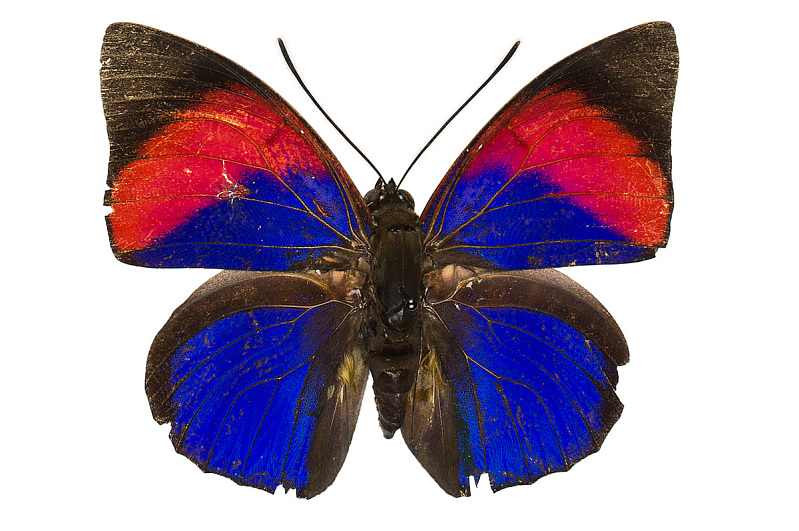
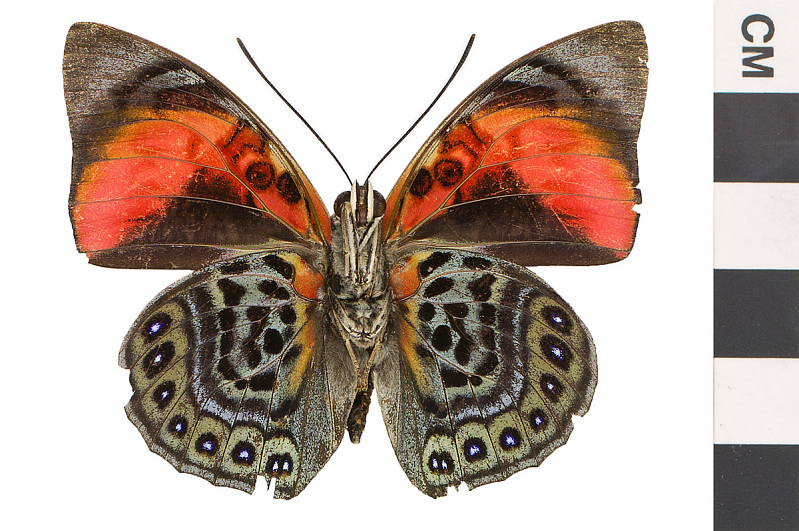
Butterfly: Wingspan: 1¾ – 2½ inches (4.5 – 6.35 cm). Adults are orange above and brown below. Both sexes have a dark spot on the forewing’s upperside. Males have a dark margin; females have a wide yellow-orange submarginal band (just inside the outer edge) bordered by darker scales. The winter form of both sexes is more boldly marked, the forewings are more pointed, and the tails are longer. Adults overwinter.
ID Tip: Hooked forewing. Orange open wings. Leaf-like closed wings. Short tails. Wing edges smooth
Egg: Creamy. Usually laid on the underside of a croton leaf.
Caterpillar: Grayish-green with small raised dots; head grayish-green with small protuberances. Tapers near the end. Young caterpillars create frass chains on tips of host plant leaves. Late stage caterpillars roll a leaf lengthwise, making a loose tube-like shelter where they rest and hide when not eating.
Chrysalis: Chunky, green. Often suspended from a host plant leaf or stem.
Family:Nymphalidae (brushfooted butterflies)
Description:As it rests with wings closed, the goatweed leafwing mimics a dry, dead leaf. But when it flutters around, it flashes bright rusty orange on the top side of its wings.
Adults are orange above and brown below. Both sexes have a dark spot on the dorsal forewing (in the discal cell). Males have a dark margin; females have a wide yellow-orange submarginal band (just inside the outer edge) bordered by darker scales. The winter form of both is more boldly marked, the forewings are more pointed and the tails are longer.
The wing margins are not scalloped, and the ventral (lower) side is a fairly uniform brown, separating this species from the anglewings (Polygonia spp.), such as the commas and question mark.
Caterpillars are grayish green with small raised dots; the head is grayish green with small protuberances.
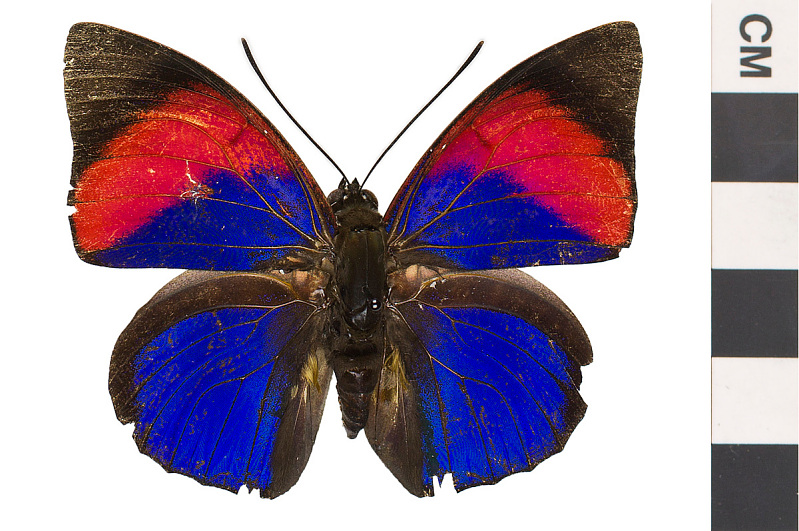
Identification: Underside looks like a dead leaf. Male summer form is dull red with a barely hooked forewing tip, and a short tail on the hindwing. Male winter form is redder with more dark markings, a definitely hooked forewing tip, and a longer tail than the summer form. Both female forms are lighter red and have an irregular yellow submarginal band. The winter female form has hooked forewing tips.
Wing Span: 2 3/8 – 3 1/4 inches (6 – 8.2 cm).
Life History: Flight is swift, strong, and erratic. Males perch in clearings or on ridgetops to wait for females. Eggs are laid singly under host plant leaves; caterpillars eat leaves. A caterpillar changes shelters as it grows: first it perches on a leaf midvein, then lives in the shelter of a folded leaf, and finally rests in a rolled-up leaf. Adults hibernate, then mate in the spring.
Flight: The winter form flies from August-May, the summer form from July-August.
Caterpillar Hosts: Goatweed (Croton capitatum), Texas croton (C. texensis), and prairie tea (C. monanthogynus); all in the spurge family (Euphorbiaceae).
Adult Food: Sap, rotting fruit, dung, bird droppings.
Habitat: Deciduous woods and scrub, especially along waterways; open fields, roadsides, railroad tracks, and other places.
Range: Eastern Wyoming and eastern Colorado south to New Mexico, Arizona, and Texas; east to Michigan, South Carolina, Virginia, and the Gulf States.
Conservation: Not usually of conservation concern.
NCGR: G5 – Demonstrably secure globally, though it may be quite rare in parts of its range, especially at the periphery.
Management Needs: None reported.

